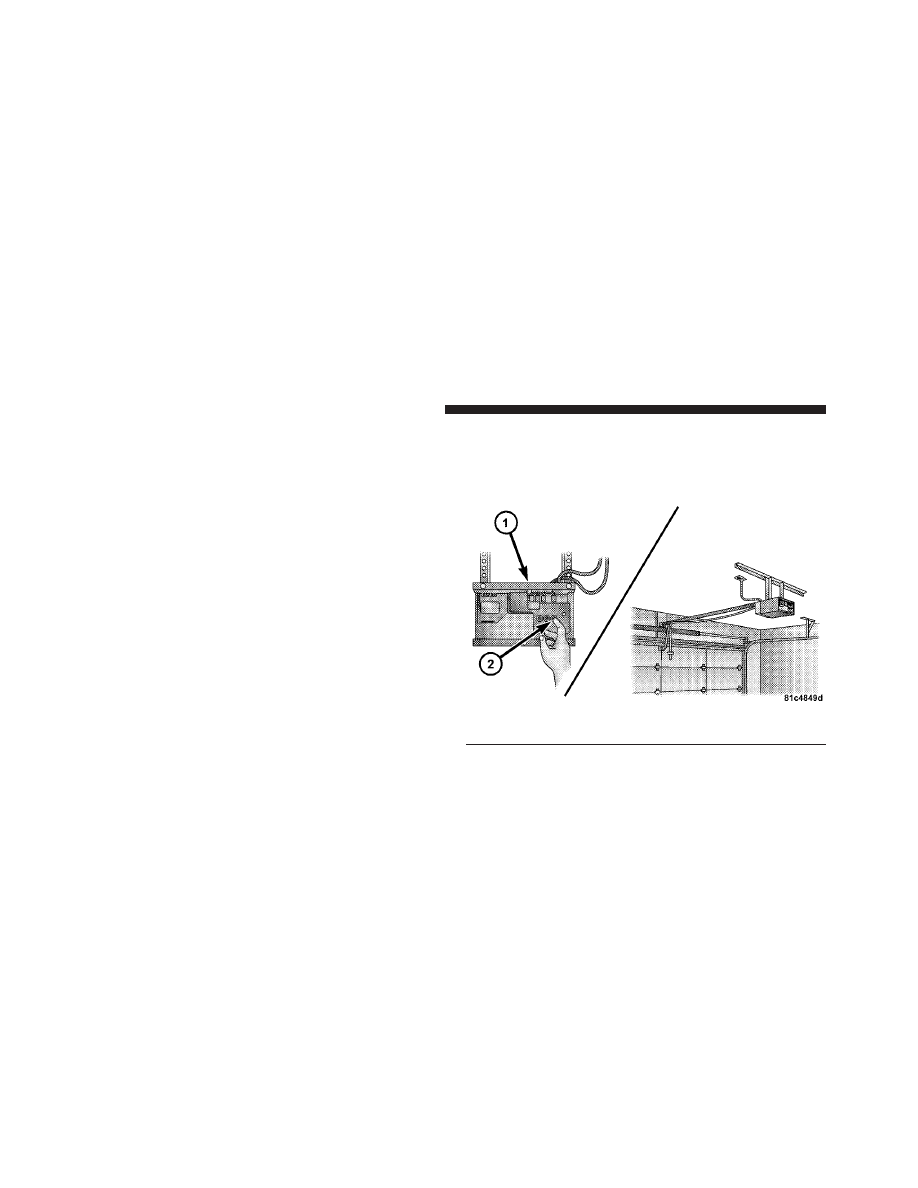Dodge Dakota (2011 year). Instruction - part 10

If the signal is too weak to train, replace the battery in the
handheld transmitter.
NOTE:
Some gate operators and garage door openers
may require you to replace Step 3 with procedures noted
in the “Gate Operator/Canadian Programming” section.
4. Press and hold the just-trained HomeLink
威 button. If
the indicator(s) blink rapidly for two seconds and then
remains constant, continue with the next section: “Pro-
gramming A Rolling Code System”.
NOTE:
After training a HomeLink
威 channel, if the
garage door does not operate with HomeLink
威 and the
garage door opener was manufactured after 1995, the
garage door opener may have rolling code. If so, proceed
to Step 5 “Programming A Rolling Code System.”
5. Programming A Rolling Code System
At the garage door opener motor (in the garage), locate
the “Learn” or “Training” button.
This can usually be found where the hanging antenna
wire is attached to the garage door opener motor (it is
NOT the button normally used to open and close the
door).
1 — Garage Door Opener
2 — Training Button
156
UNDERSTANDING THE FEATURES OF YOUR VEHICLE